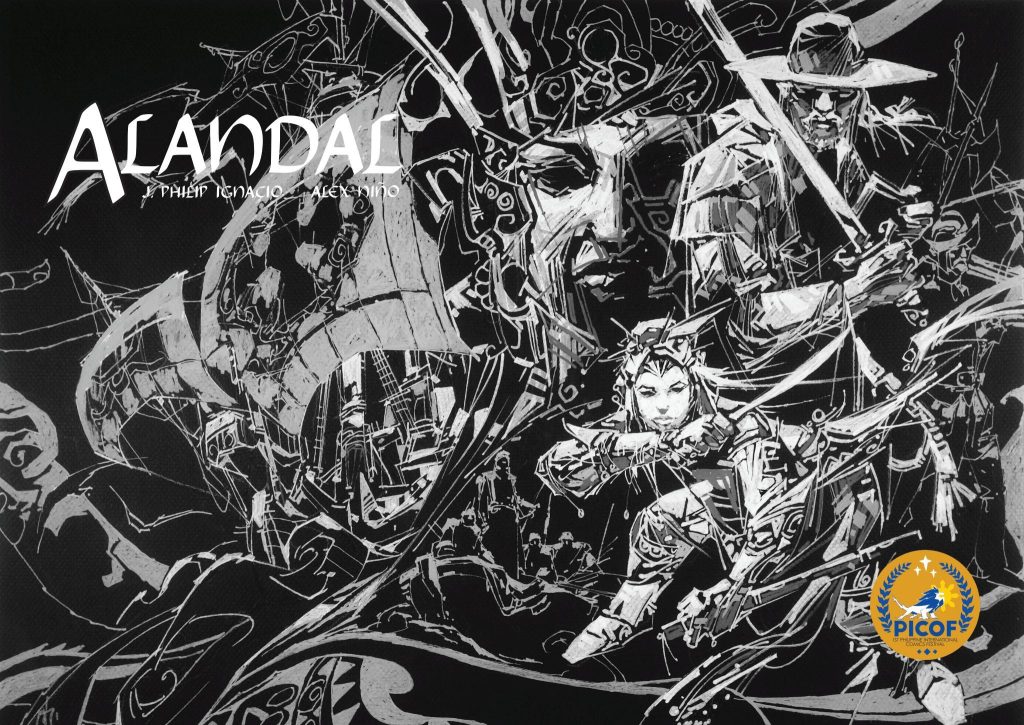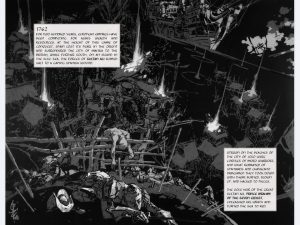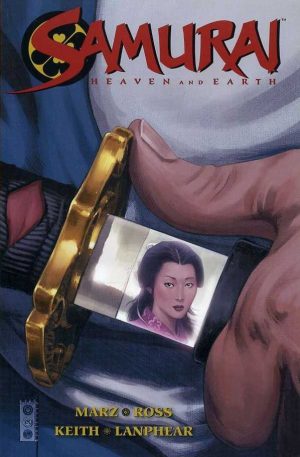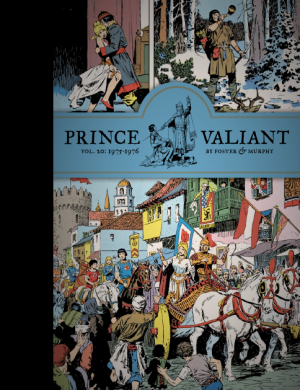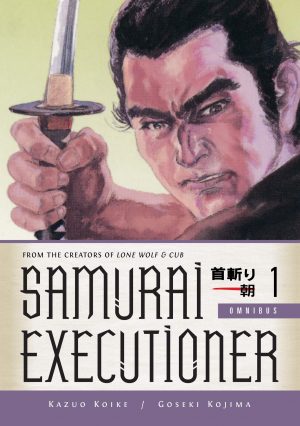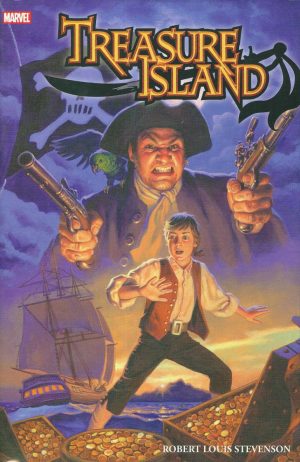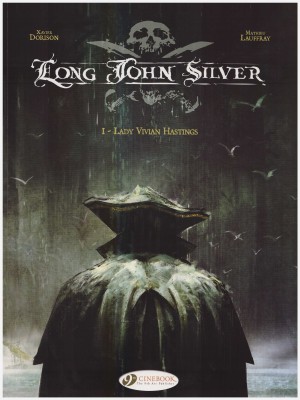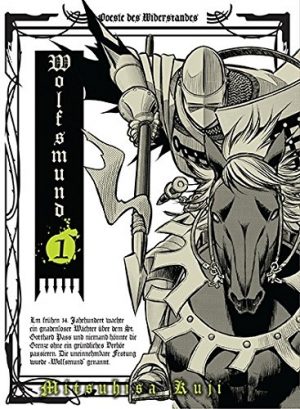Review by Frank Plowright
Alex Niño’s extraordinary detail in black and white contrast first began gracing American comics in the 1970s, as the most distinctive among the Filipino artists working primarily on horror and supernatural material. He was one of those comic artists who arrives once a generation as a true original. However, his talent wasn’t restricted to comics, as animation increasingly occupied his attention, and from the late 1980s any comic work from Niño has been rare and brief, becoming even more so in the 21st century. By 2021 the chances of seeing any new work seemed unlikely when the Filipino-published Alandal appeared to show that in his eighties Niño has lost none of his visionary instincts.
Jay Ignacio’s afterword reveals he envisaged writing about the Philippines during 18th century colonial occupation, and about how what are now recognised as national forms of martial arts and swordfighting developed. Niño was happy to draw it provided he worked from a synopsis and was given complete autonomy to interpret as he saw fit. Naturally enough, there was some trepidation on Ignacio’s part, yet when he saw what Niño produced he was blown away, and so will you be. The eleven landscape pages forming the prologue are designed as individual montages telling a series of events, yet also fit together as one long single illustration, a format Niño duplicates for a couple of the following chapters. The front and back cover illustrations fit together side by side or one above the other.
That, though, is just trickery. It’s extraordinarily ambitious trickery, but would count as little more were it not also astonishingly accomplished. A typical Niño illustration has so much going on, exemplified by the cover from the abstraction of the waves, some almost bird like, to the complexity of Sabina’s stance and costume. White lines are scratched into the black as if thin strands of webbing dragged by a spider, and every viewing reveals new details. Is that, for instance, someone strapped to the ship’s mast? The compositional intensity is plain intimidating, and so it is for every one of the 82 pages, almost all single illustrations accompanied by narrative captions.
With the art so amazing, let’s not diminish Igancio’s rollicking adventure story. In 1762 Spanish adventurer and expert swordsman Sevillano Rodriguez manages a miraculous escape with his infant daughter, to whom he passes on his swordfighting skills as they live in remote seclusion until discovered twelve years later. Sabina is abducted by pirates and returned to the Sultan from whom she escaped as a child to learn a different version of her past.
For all the illustrative brilliance, the question has to be asked whether Niño’s interpretation is the best way to tell the story. It’s not. Nuance is absent, emotion almost absent, and large blocks of text and awkwardly placed word balloons are Ignacio’s only option. Without them no reader would have a clue as to what was happening. As such, bask in artistic genius, but ask no more. Despite this, Alandal won Best Graphic Novel at the Philippines 40th National Book Awards.
This isn’t stocked by the major online booksellers, so your best bet is to head for the always reliable Stuart Ng Books.
